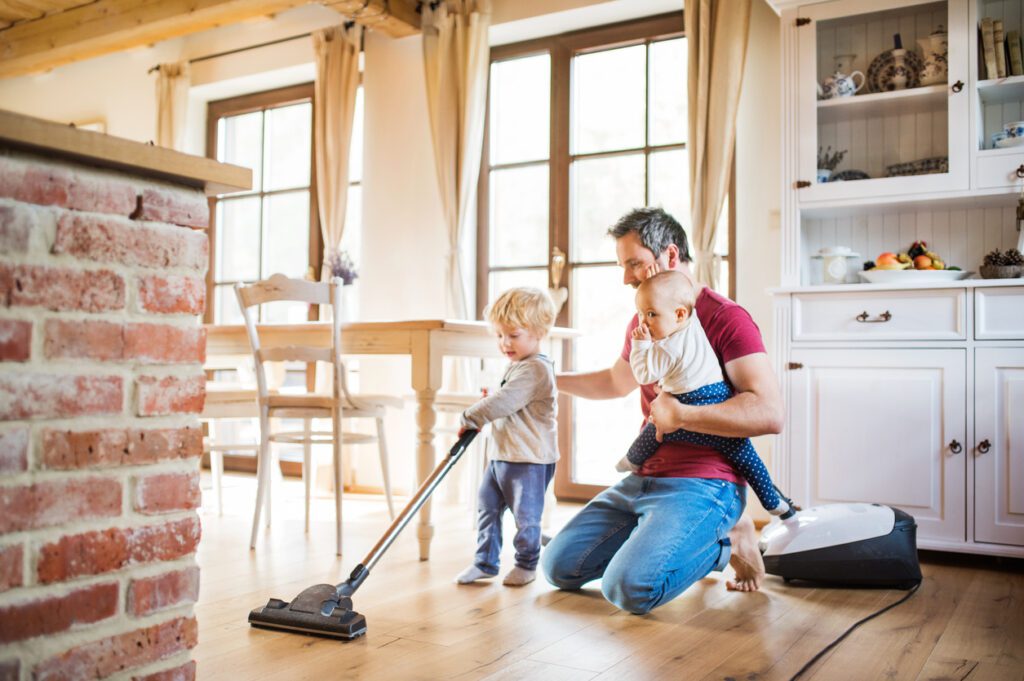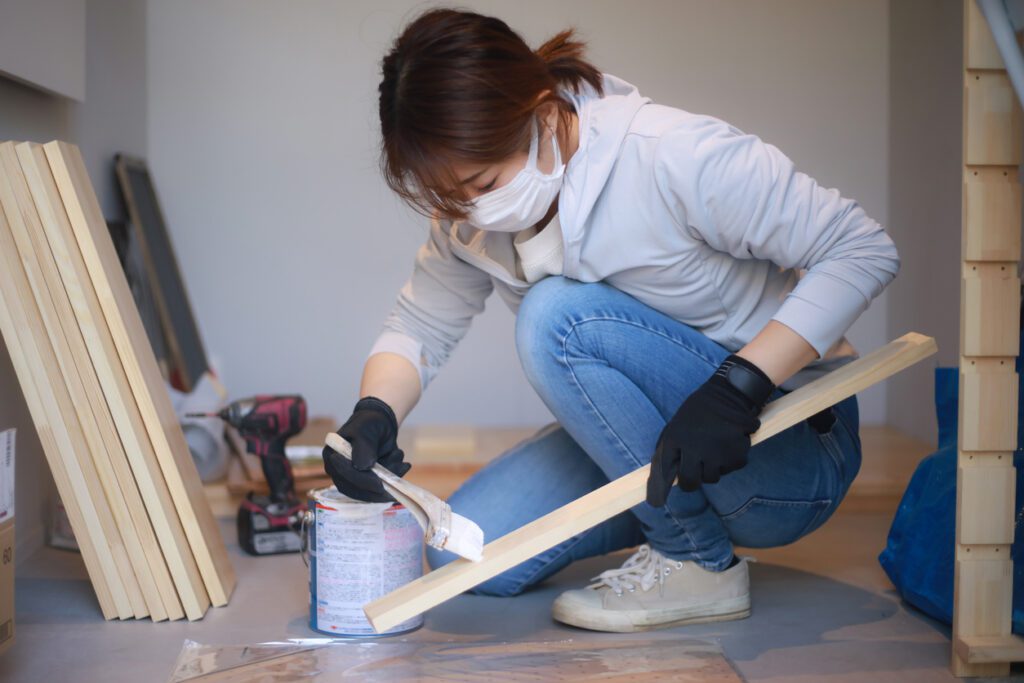Your safety habits don’t disappear when you leave the office or job site. The same hazards that cause workplace injuries happen just as often at home – think slips, trips, falls, cuts, and strains. Yet many people compartmentalize safety and think about it only at work. This disconnect creates a dangerous gap in awareness that can lead to preventable injuries, whether you’re on the clock or off.
On this episode of the WorkSafe Podcast, we explored how to build practical safety habits that extend from the workplace to home with Sheila Schmidt, MEM Safety and Risk Services Regional Manager. Sheila’s decades of experience as a field safety consultant give her a unique perspective on how the same safety principles that protect employees on the job can (and should) follow them home.
Why home safety matters for your work life
Building consistent safety habits in all areas of life strengthens your foundation for injury prevention everywhere.
The connection between home and workplace injuries
Americans experienced more than 52 million medically consulted injuries in 2023. When you get hurt during your personal time, the impact extends beyond your weekend plans. It can affect your ability to perform at work, attend regularly, and maintain productivity.
“We face the same hazards at home that we do at work,” explained Schmidt. “While we’re not going to have as much of a formal response to them, we still need to have some sort of preparation and awareness of those hazards.”
Safety habits are transferable skills
The safety training you receive at work, from lockout/tagout procedures to PPE requirements, includes principles that apply to home situations. For example:
| Workplace safety concept | Home safety application |
| Lockout/tagout | Shutting off the circuit breaker before installing a light fixture |
| PPE requirements | Wearing safety glasses while using a chainsaw |
| Hazard awareness | Identifying trip risks before they cause falls |
Safety at home is an extension of the mindset you’ve developed at work – just applied to different environments.
Common home hazards that mirror workplace risks
Your home contains many of the same hazards you’re trained to avoid at work, but without the formal safety programs to address them.
Slips, trips, and falls: the #1 risk everywhere
Gravity is a hazard at home and in the workplace. The National Safety Council reports that falls are the second leading cause of preventable injury-related death, resulting in 46,100 deaths in 2023. The housekeeping practices that prevent workplace falls are equally important in your personal space.
“I see many homes where the signal to take something up or down stairs is leaving it on the steps,” Schmidt noted. “But now we’ve just created a hazard on our stairs.”
Simple housekeeping changes can reduce your risk of slips, trips and falls:
- Keep stairs clear of items, even temporarily.
- Ensure walking surfaces are well-lit and level.
- Address known hazards that household members might avoid but visitors wouldn’t know about.
- Clean up spills immediately.
Walk through your home with fresh eyes, imagining you’re a first-time visitor. What hazards would you notice that you’ve learned to navigate around?
📍 Read next: Slips, Trips, and Falls: Don’t Sweep Safety Risks Under the Rug >

Ladder safety doesn’t stop at 5 p.m.
Whether you’re cleaning gutters, hanging holiday decorations, or changing a light bulb, follow the same ladder safety principles at home that you do at work.
“Make sure you’re using the right ladder for the job,” advised Schmidt. “Is it in good condition? Is it going to get you high enough so that you’re not standing on the top rung or overreaching? Is it set on flat ground with a 4:1 slope away from the building?”
Tips for safe home ladder use:
- Have the right type of ladder readily available (don’t store it in the garage if you need it in the kitchen).
- Use A-frame ladders for their intended purpose – never lean them against walls.
- Have someone spot you when possible.
- Consider step stools for routine tasks to avoid climbing on counters or chairs.
📍 Read next: Ladders Last: Putting Safety First When Working at Heights >
Bringing the workplace PPE mindset home
Personal protective equipment isn’t limited to the job site. Many home activities require the same level of protection you’d use at work.
When to wear protective equipment at home
“We think about PPE in the workplace – hearing protection, safety glasses,” Schmidt said. “How does that translate to our home life? Are you wearing safety glasses or hearing protection when you’re using the mower? What kind of shoes are we wearing?”
Consider these common home activities that require PPE:
- Mowing and yard work: Closed-toe shoes, long pants, eye protection, hearing protection
- DIY projects: Safety glasses, gloves, appropriate footwear
- Power tool use: All relevant workplace PPE standards apply
➡️ Here’s an example: Professional landscapers wear long pants and long sleeves even in hot weather. They’re protecting against flying debris, insect stings, and sun exposure – the same risks you face during weekend yard work.
Planning and preparation for home projects
Before starting any home project, apply the same planning approach you’d use for workplace tasks.
“Make sure you understand the full project before you start,” Schmidt recommended. “YouTube is a great resource. Understand all the steps involved from beginning to end. Many creators will even offer safety tips before they start.”
Essential steps to prep:
- Research the entire process, not just the end result
- Read equipment manuals and warning labels
- Never remove guards or modify tools
- Have all necessary PPE before beginning
- Understand what could go wrong and how to respond
Remember: The warnings and guards on consumer tools exist for the same reasons they do on workplace equipment. Someone was injured, and the manufacturer added protection to prevent similar incidents.

Building a family safety culture
Creating a safety-focused environment at home benefits everyone and reinforces the habits that keep you safe at work.
Looking out for one another
A successful workplace safety culture depends on everyone watching out for each other. A family safety culture requires the same collective awareness.
“If you see a spouse or a kid climbing up on a chair, offer a ladder,” Schmidt suggested. “Let them know why: ‘This is safer, and I don’t want you to get hurt.’ As you reiterate that, you start to set the expectation.”
Effective family safety communication means being specific rather than generic:
| Instead of this: | Say this: |
| “Be careful” | “Wear your helmet and stay on the sidewalk” |
| “Watch out” | “It’s harvest season, so go slow and look for tractors on the road” |
| “Be safe” | “Use the step stool instead of standing on that chair” |
Specificity helps your loved ones understand exactly what safe behavior looks like.
Making safety generational
Safety habits, both good and bad, get passed down through families. The behaviors you model today influence how future generations approach risk.
“You’re setting the tone going forward,” Schmidt explained. “We’re making it better for each generation after us.”
☑️ The bottom line: Breaking cycles of unsafe practices requires conscious effort, but the benefits extend far into the future.
How employers can support home safety
Forward-thinking employers recognize that employee well-being doesn’t stop at the workplace door. Here are some ways you can support your employees in building safety cultures at home.
Extending PPE access beyond work hours
Some of the most progressive safety cultures, Schmidt explained, include allowing employees to borrow workplace safety equipment for home use:
If they need hearing protection and eye protection at home, or somebody needs to do gutters, Christmas lights, or deer hunting and they can borrow fall protection for a weekend… absolutely.
Not only are you communicating the importance of that safety culture, but you’re showing you care about employees as people, whether they’re on the clock or off.
This approach benefits both employees and employers by:
- Demonstrating genuine care for employee wellbeing
- Ensuring employees return to work injury-free
- Reinforcing proper PPE usage and comfort with equipment
- Building safety habits that carry over to the workplace
By consistently emphasizing safety both on and off the job, you’ll help employees develop comprehensive safety awareness that benefits everyone.
Start small, think big
You don’t need a formal home safety program with three-ring binders and detailed procedures. Start with awareness and small, consistent actions.
“Don’t let the little stuff become the big stuff,” Schmidt advised. “Start small, because that’s the stuff that matters the most. You should be aware of what hazards exist, how you’re going to protect yourself, and how you can encourage others to be safe as well.”
Getting started: simple home safety checklist
| ✅ | Walk through your home to identify obvious hazards. Look for trip hazards, poor lighting, or unstable surfaces. |
| ✅ | Keep basic safety equipment easily accessible. Place step stools, flashlights, and first aid supplies where you need them most. |
| ✅ | Apply workplace safety principles to home projects. Read manuals, wear appropriate PPE, and don’t bypass safety guards. |
| ✅ | Have specific safety conversations with family members. Replace “be careful” with concrete instructions like “wear your helmet and stay on the sidewalk.” |
| ✅ | Learn from others’ experiences and near misses. Pay attention to warning labels and ask yourself why they exist. |
| ✅ | Check and maintain your safety equipment. Ensure smoke detectors have fresh batteries, ladders are in good condition, and walking surfaces are well lit. |
| ✅ | Create designated spots for items going up or down stairs. Avoid leaving items on steps, even temporarily. |
| ✅ | Establish emergency plans. Know evacuation routes and have emergency contacts readily available. |
The goal isn’t perfection – it’s building the same safety awareness you use at work into your personal life.
The safety mindset never clocks out
Safety isn’t a compliance checkbox that you leave at the office; it’s a mindset that protects you and your loved ones everywhere you go.
When you integrate a safety mindset into all aspects of your life, you become more aware of hazards, more prepared for risks, and more likely to make choices that protect yourself and others. That’s a life skill that pays dividends in every environment.
Ready to start thinking intentionally about your home safety culture? Our safety resource library is free for everyone, always.